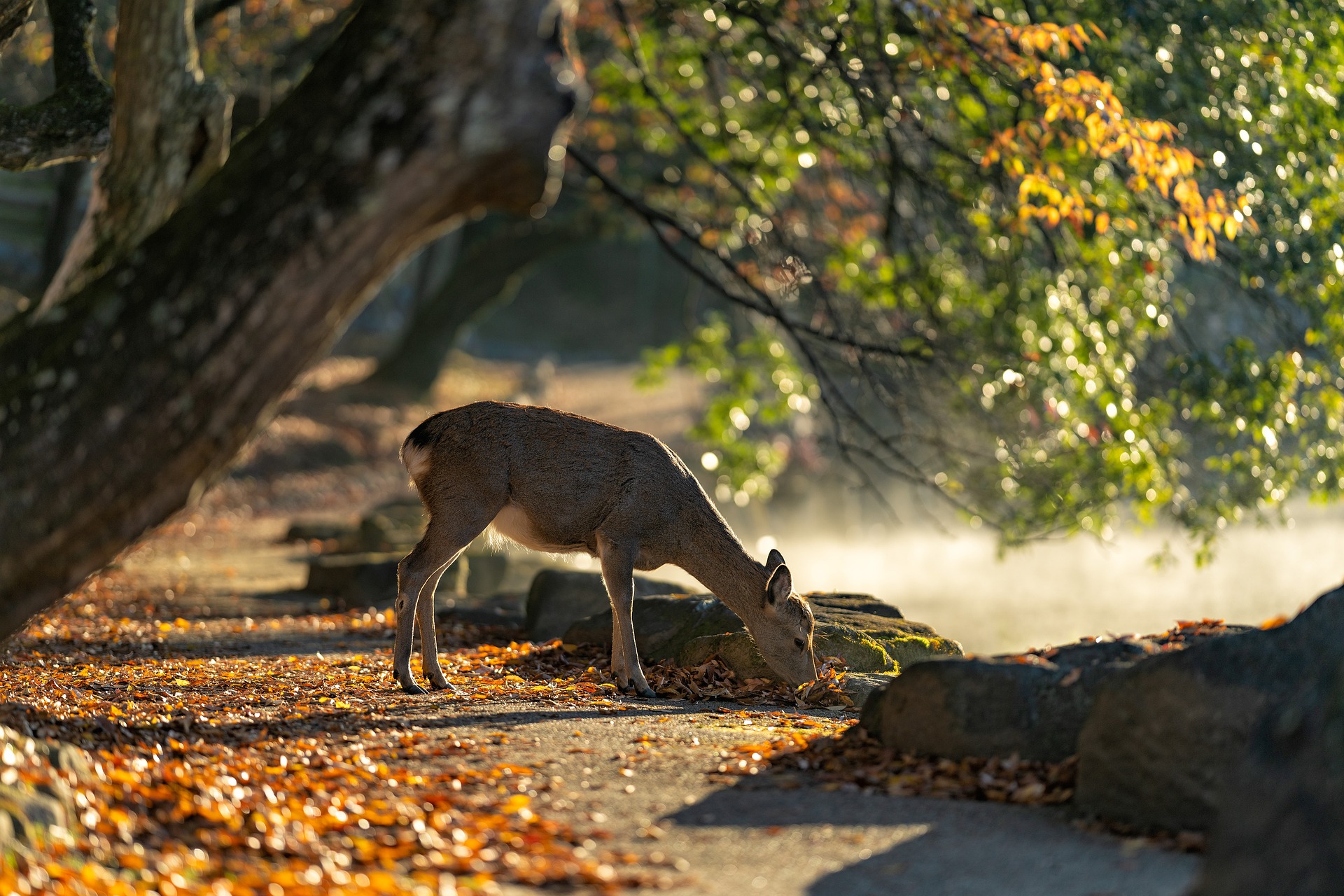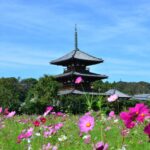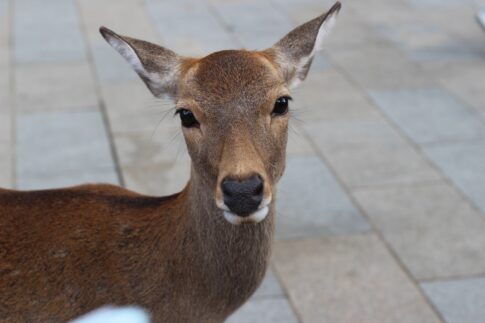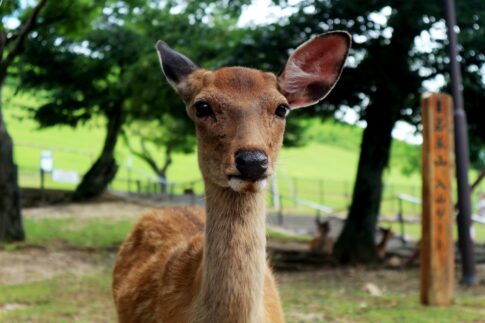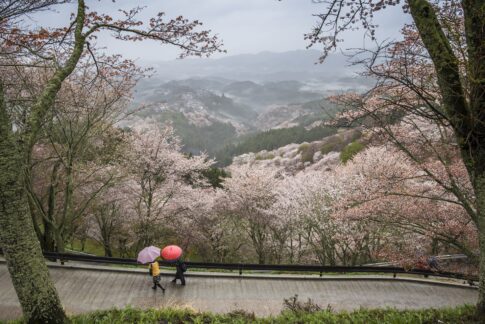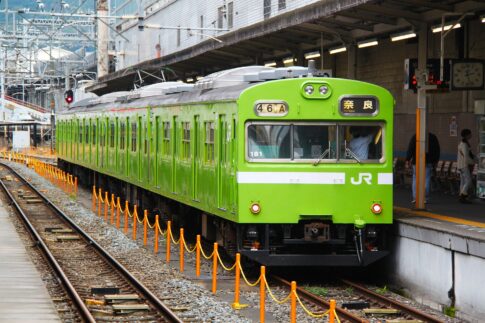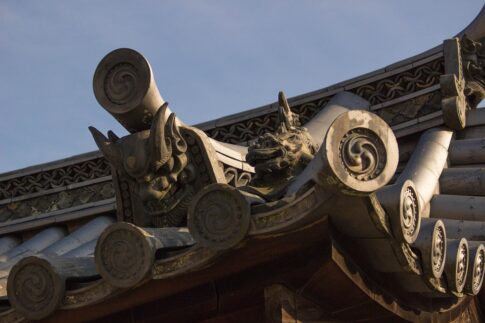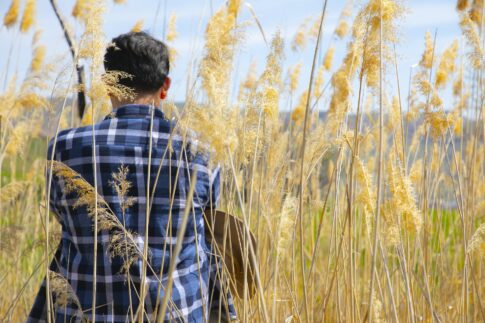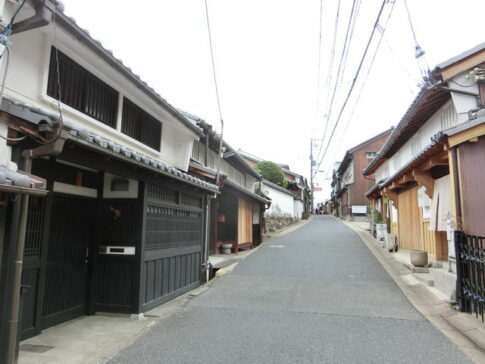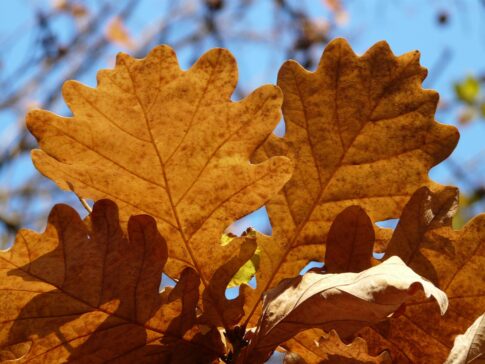Nara is one of the most beautiful places in Japan with dozens of temples, shrines and other sightseeing spots that can easily take weeks and months to fully explore. In this guide, we will introduce some of the most amazing experiences that you can have while visiting this wonderful old city of Japan.
Things to do in Nara
① Nara Park
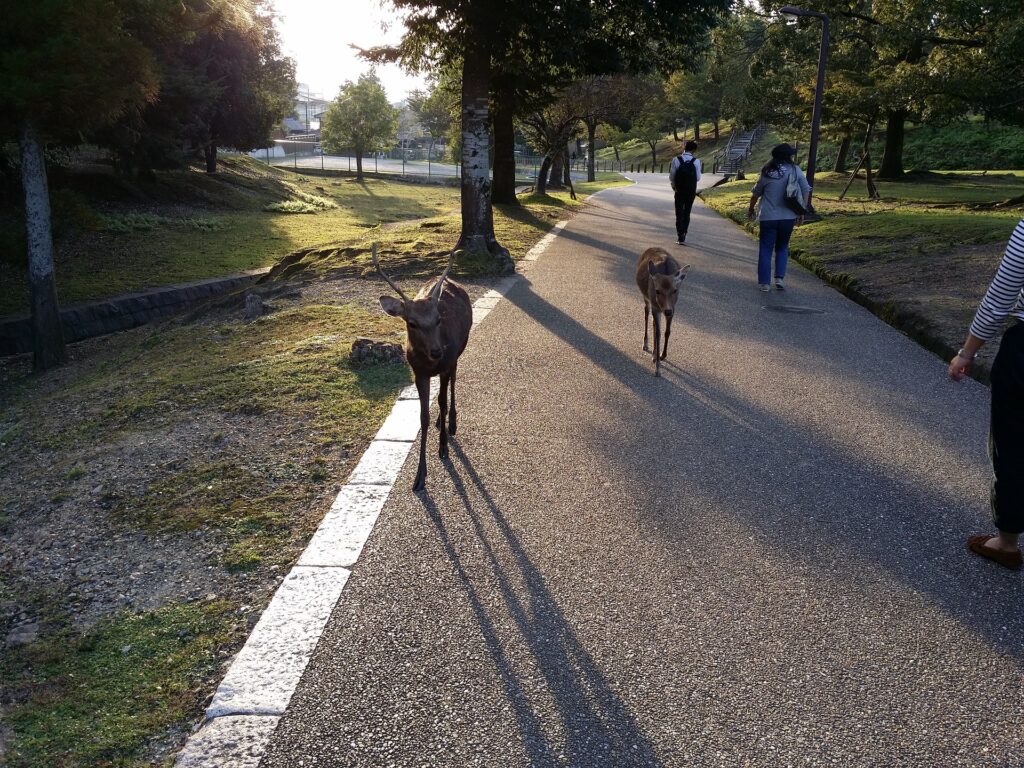
The first thing to do in Nara is Nara Park (奈良公園).
The famous “deer” park, Nara Park (奈良公園) is one of the most popular tourist attractions in Nara.
All across the park, hundreds of wild deer are freely roaming and visitor are allowed to feed them with Shika Senbei (deer crackers), a sort of biscuit for deer.
Shiika Senbei are sold for 200 yen (10 pieces) at stalls and shops in the park.
Once you get Shika Senbei, you will quickly be surrounded by biscuit-hungry deer looking for a treat.
The deer in Nara Park are known for their unique quirk of bowing to visitors.
This is because the deer know that they’re more likely to get the crackers if they do so.
If you want to see the deer bow, stand face to face and bow your head to them first.
Although these deer are usually so calm and polite, they can sometimes get agitated and bite or kick people, especially if they are teasing them with food.
So just gently hand out Shika Senbei and don’t try to provoke them.
Nara Park also contains a number of Nara’s major attractions, including Todaiji, Kasuga Taisha and the Nara National Museum.
To access Nara Park, simply walk to the east from the Kintetsu Nara Station for 5 minutes or from the JR Nara Station for about 20 minutes.
② Kasuga Taisha
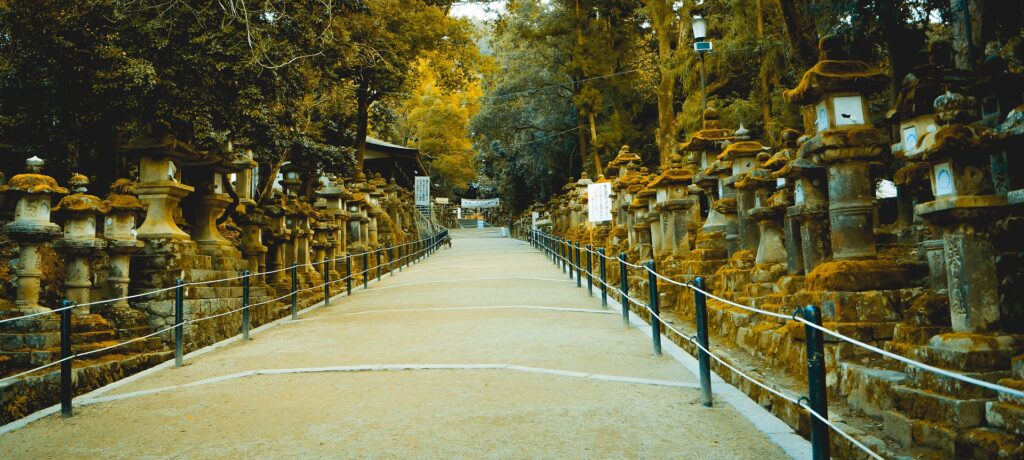
The second thing to do in Nara is Kasuga Taisha (春日大社) .
Kasuga Taisha (春日大社) is an old Shinto shrine built in 768.
It is part of the Historic Monuments of Ancient Nara, one of Nara’s UNESCO World Heritage Sites.
It is located in the east end of Nara Park and this is because deer are believed to be sacred animals in Shintoism.
Kasuga Taisha is famous for its photogenic beauty, with hundreds and thousands of lanterns hanging from the shrine’s buildings.
These lanterns light up the shrine during its lantern festival Mandoro (万燈) held in February and August.
Kasuga Taisha also contains the Kasuga Taisha Museum, which displays the shrine’s holy relics.
The outer area of the shrine is free to explore, but there is a 500 yen to access the inner area from which you can view the inner buildings more closely.
Kasuga Taisha is open from 6:30 am to 5:30 pm (7 am to 5 pm between November and February) but it remains open until around 9 pm during the Mandoro festival.
③ Todaiji and Horyuji
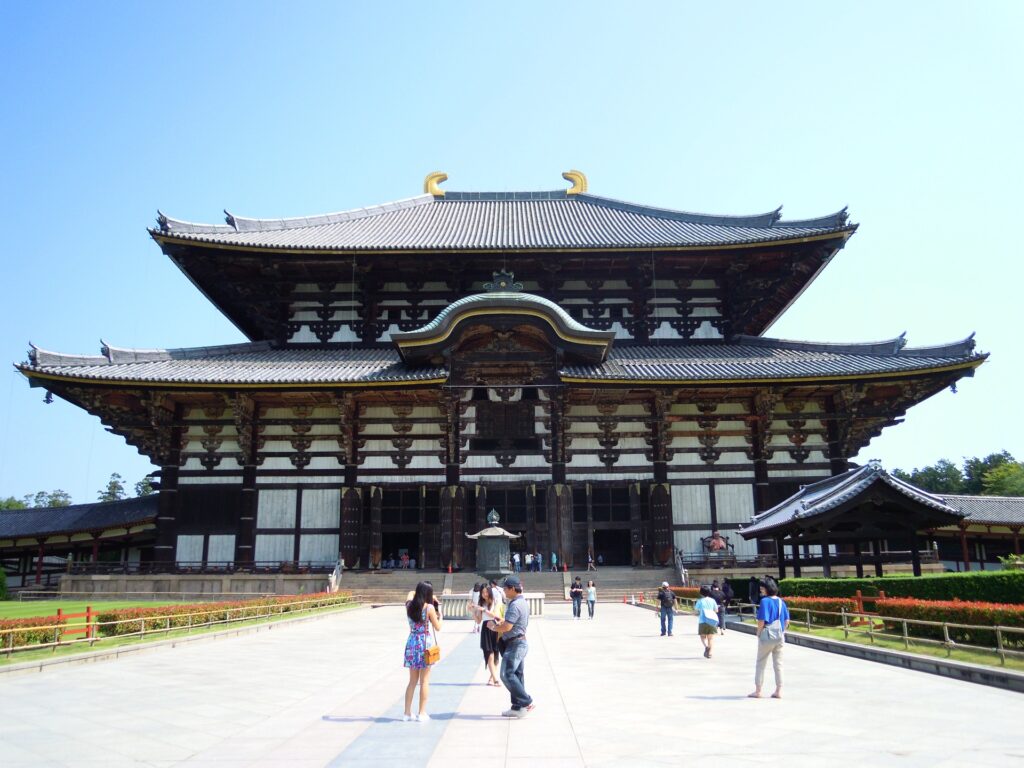
The third thing to do in Nara is Todaiji (東大寺) and Horyuji (法隆寺) .
As we introduced in the previous articles,
Todaiji (東大寺) and Horyuji (法隆寺) are two of the oldest and most historically significant temples in Japan.
Both temple were built around the 8th century in the former capital of Japan, Heijō-kyō (平城京), today’s Nara. The Todaiji temple contains the Great Buddha, known as Daibutsu (大仏), the world’s largest bronze statue of Buddha, and Great Buddha Hall (大仏殿 Daibutsuden), one of the largest wooden building in the world.
The Horyuji temple is smaller in scale and is located far from the central Nara.
It features Gojunoto (五重の塔), a splendid 5-storey tower overlooking the temple, and Kondō (金堂), the world’s oldest wooden building and the home to the temple’s massive Buddhist art collection.
It will take about one hour to travel between these temples, so we recommend visiting them over the course of two days.
④ Naramachi
The forth thing to do in Nara is Naramachi (ならまち) .
Located in the southeast of central Nara, Naramachi (ならまち) used to be a merchant district bustling with people.
Founded in the 8th century, the town became one of the major industrial hubs during the Edo period and its population counted more than 3 million.
Today, Naramachi is a popular sightseeing spot which preserves the old Machiya (町屋, townhouse) townscape.
Along with old buildings and warehouses, there are also shops, cafes, restaurants, guesthouses and museums lining the the district’s narrow pathways, attracting tourists with its peaceful and aesthetic atmosphere of medieval Japan.
Some of the notable attractions in Naramachi include: the Nara Craft Museum (なら工藝館), a museum for Nara’s traditional arts and crafts, Harushika Sake Brewery (春鹿 醸造元), a sake brewery with a tour option available inside the house, and The Gangō-ji Temple (元興寺), a prestigious temple which used to be one of Nara’s Seven Great Temples.
Naramachi is about a 15-minute walk from the Kintetsu Nara Station and a 20-minute walk from the JR Nara Station.
⑤ Heijō-kyō
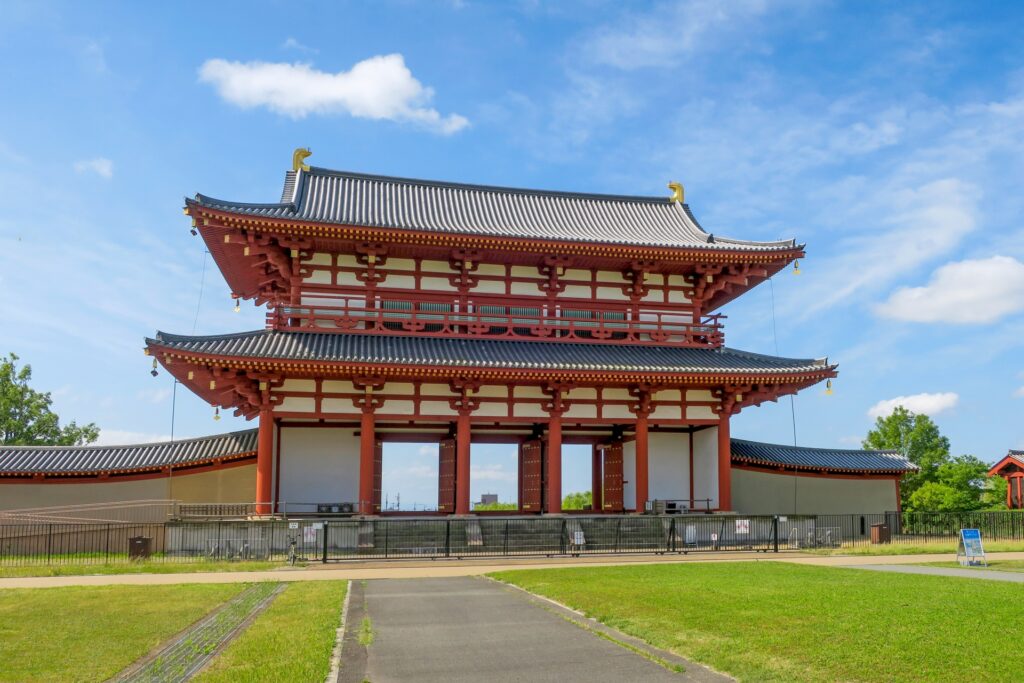
The fifth thing to do in Nara is Heijō-kyō (平城京).
Heijō-kyō (平城京) served as the emperor’s palace and was the first permanent capital of Japan.
At its peak, the palace flourished as a huge cosmopolitan city with about 8 million residents including politicians and foreign traders.
It was then abandoned as the capital moved to Heian-kyō (平安京) in the late 8th century.
After a while the site was used as rice fields until it regained attention in the early 20th century; a move towards preserving the area has begun as new ruins were excavated from its grounds in 1950.
In 2010, commemorative events were held to celebrate the 1,300th anniversary of Heijō-kyō, featuring the newly reconstructed Daiichiji Daigokuden (第一次大極殿), the former audience hall.
Another attraction at Heijō-kyō is the East Palace Garden (東院庭園), which is a reconstruction of what was believed to be the first Japanese garden.
Heijō-kyō is just a 15-minute walk from the Yamato-Saidaiji Station and all attractions can be explored for free.
Summary
Today, we have introduced some of the most amazing places to visit in Nara.
If you want to know more about Nara and what to expect during your trip, check out other articles on this blog so that you won’t miss out anything about this wonderful city.
